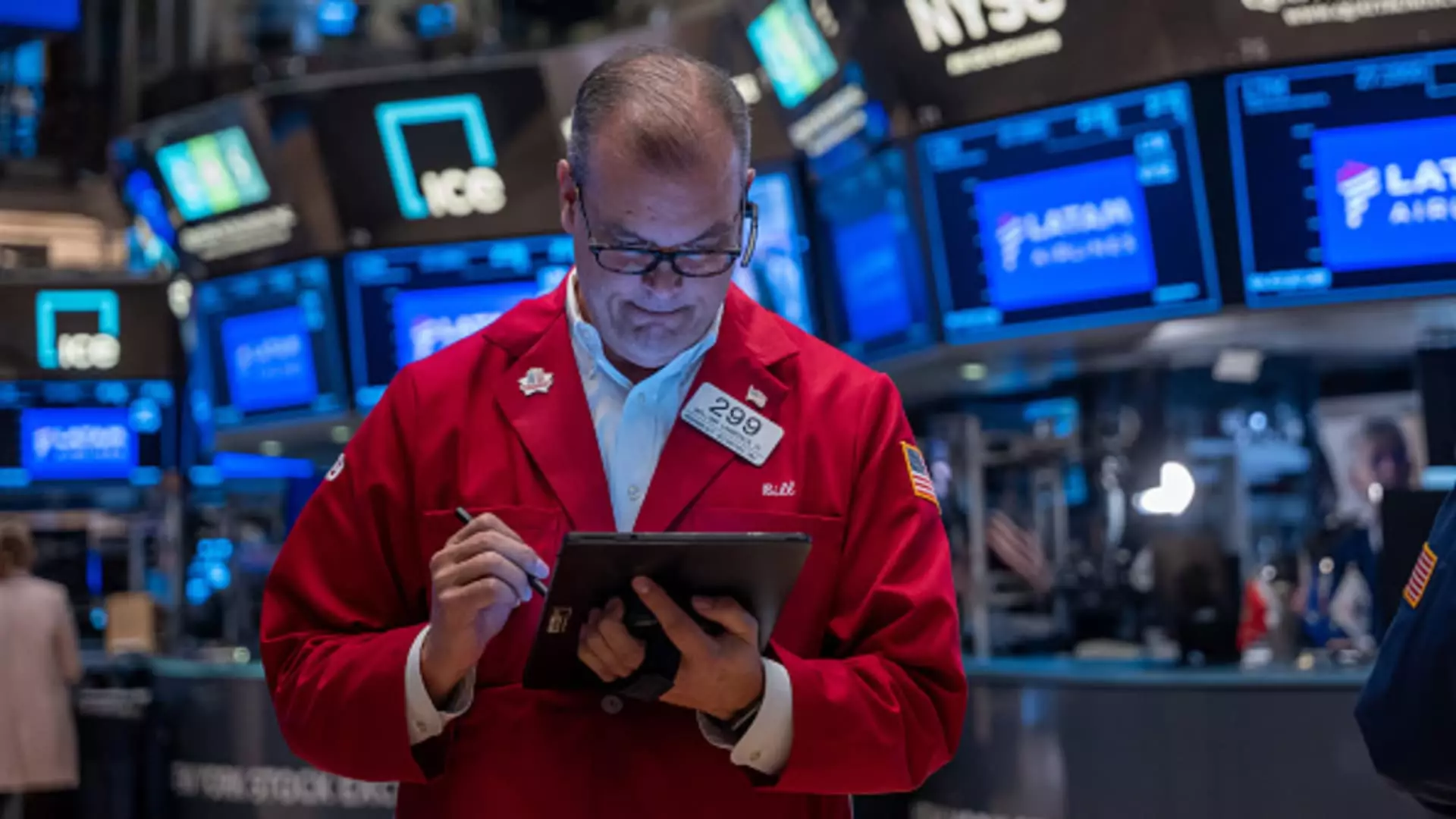As the financial markets navigate the complexities of economic indicators and company earnings, investors and analysts are keenly assessing trends and projections. The latest reports indicate noticeable fluctuations in major stock indices, along with significant movements in bond yields. This article delves into the implications of these trends, key companies to watch, and the broader economic picture shaping the investment landscape moving forward.
The Current State of the Markets
Recent trading sessions have shown a downward trend in major indices, particularly the Dow Jones Industrial Average and the S&P 500, which experienced declines for the second consecutive day. This behavior poses questions about market sentiment and investor confidence, especially in the face of rising yields. The yield on the benchmark ten-year Treasury note has jumped above 4.2%, which has garnered attention as the most searched ticker on financial platforms. Such movements in government bond yields often signal shifting expectations regarding interest rates and economic growth.
The two-year Treasury yield, resting at 4.03%, and one-year Treasury bill yielding 4.26%, indicate that short-term borrowing costs are also on the rise. These numbers are significant as they reflect investors’ outlook on the economy and central bank policies. Notably, the six-month T-bill yield stands at 4.49%, while the three-month and one-month yields are even higher at 4.63% and 4.78%, respectively. These rising yields can lead to increased borrowing costs for consumers and businesses, potentially dampening economic activity.
Turning to corporate news, Starbucks has come under the spotlight, reporting a 4% drop in extended trading hours. This decline arises amidst concerns over falling same-store sales and the company’s decision to suspend guidance for fiscal 2025. To attract investor interest, Starbucks has announced a dividend increase to 61 cents per share from 57 cents, signaling its commitment to returning value to shareholders despite operational challenges. This tactic underscores a broader strategy many companies employ to instill confidence during tougher economic times.
In another segment of the food and beverage sector, McDonald’s has faced scrutiny following reports of 49 E. coli cases linked to its restaurants, particularly affecting states like Colorado and Nebraska. As a response to these health concerns, McDonald’s has ceased using certain ingredients, which has subsequently led to a 6% plunge in stock value during after-hours trading. Comparisons have been drawn to past troubles faced by Chipotle, which struggled for years to regain investor confidence after similar issues. The resilience and recovery strategies employed by both companies will be critical to observe in the coming weeks, especially as consumer trust can significantly impact stock performance.
The aerospace industry is seeing notable activity as well, particularly surrounding Boeing. Recently, there has been a slight surge in Boeing’s stock, rising approximately 5% over the past week. However, it remains 40% below its 52-week high. The impending discussions between Boeing’s leadership and union representatives could significantly influence the company’s trajectory, especially given the labor dynamics and the broader context of global supply chains.
In the consumer products realm, Coca-Cola is also on the radar, with earnings set to be reported soon. Coca-Cola’s stock has increased by 7% over the last three months, bringing it closer to previous highs. Investors will be on the lookout for details regarding sales performance and strategic initiatives that might affect future growth.
The technology sector remains a focal point, with key players like Tesla and IBM set to disclose earnings shortly. Tesla, despite a recent slump of 13% over three months, still commands significant attention due to its leadership in the electric vehicle market. Conversely, IBM has made gains of 26% in the last quarter, and its forthcoming results could provide insights into its recovery and adaptation in an evolving tech landscape.
As we move forward, several factors will influence market dynamics. The rising bond yields indicate a tightening monetary environment which could lead to cautious spending habits among consumers and businesses alike. Stock performance of major corporations such as Starbucks, McDonald’s, Coca-Cola, and tech giants will serve as bellwethers of broader economic health.
Investors will need to stay alert to how these developments unfold, as they may signal deeper trends influencing the U.S. economy. Market analysts will be scrutinizing economic indicators and corporate earnings reports for clues that could affect investment strategies and decisions. The coming sessions promise to be pivotal in understanding the direction of the markets, making vigilance crucial for investors navigating these turbulent waters.

